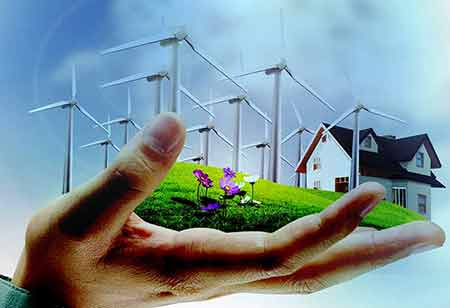Thank you for Subscribing to Energy Business Review Weekly Brief
Sorts of Power Plants for Generating Energy
Only three forms of energy utilized to produce electricity in power plants worldwide are Nuclear, coal, and wind energy.

By
Energy Business Review | Friday, January 14, 2022
Stay ahead of the industry with exclusive feature stories on the top companies, expert insights and the latest news delivered straight to your inbox. Subscribe today.
The dynamic of where and how power plants work continuously shifts as many countries move from high-polluting fossil fuels to low-carbon solutions.
Only three forms of energy utilized to produce electricity in power plants worldwide are Nuclear, coal, and wind energy.
Power plants' functions continuously shift as various countries move from high-polluting fossil fuels toward low-carbon solutions.
What is a Power Plant?
A power plant can be characterized as a large industrial facility that produces and distributes electric power on a large scale. Several power stations find one or more generators, revolving equipment that transforms mechanical energy into three-phase electric power. An electric current is made via the relative motion of a magnetic field and an electrical conductor.
Therefore, a power generating station must consider the optimal power generation and transmission. This is why transformer switchyards are often found near power plants. These switchyards increase the power's transmission voltage, delivering it more effectively over long distances.
Types of Power Plants
Nuclear power plants
Nuclear power plants induce much electricity using a nuclear fission reaction using uranium as fuel. These power plants are usually seen as environmentally beneficial since they are a low-carbon energy source.
Nuclear power plants are also more dependable than renewable energy sources like solar and wind. Although these facilities need significant investment to start operating, the expense of maintaining them is comparatively cheap.
Diesel-fired power plants
This power plant uses diesel as a fuel and is employed for small-scale electric power production. They are usually deployed in locations where alternate power sources are not readily available and are mainly used as a backup for uninterrupted power delivery throughout outages.
Diesel plants have less space and higher thermal efficiency than coal-fired power plants. However, the power plants have not gained prominence at the same level as other power generation facilities like steam and hydro due to high maintenance costs and diesel prices.
Check Out This : HR TECH Outlook
Geothermal power plants
Binary cycle power stations, flash steam power stations, and Dry steam power stations are the three main forms of geothermal plants, and all employ steam turbines to generate energy. In recent years, geothermal energy installed capacity has steadily expanded, increasing from under 10 GW in 2010 to nearly 14 GW in 2019.
In contrast to coal-fired power plants, geothermal plants are environmentally helpful and generate less hazardous gases.






